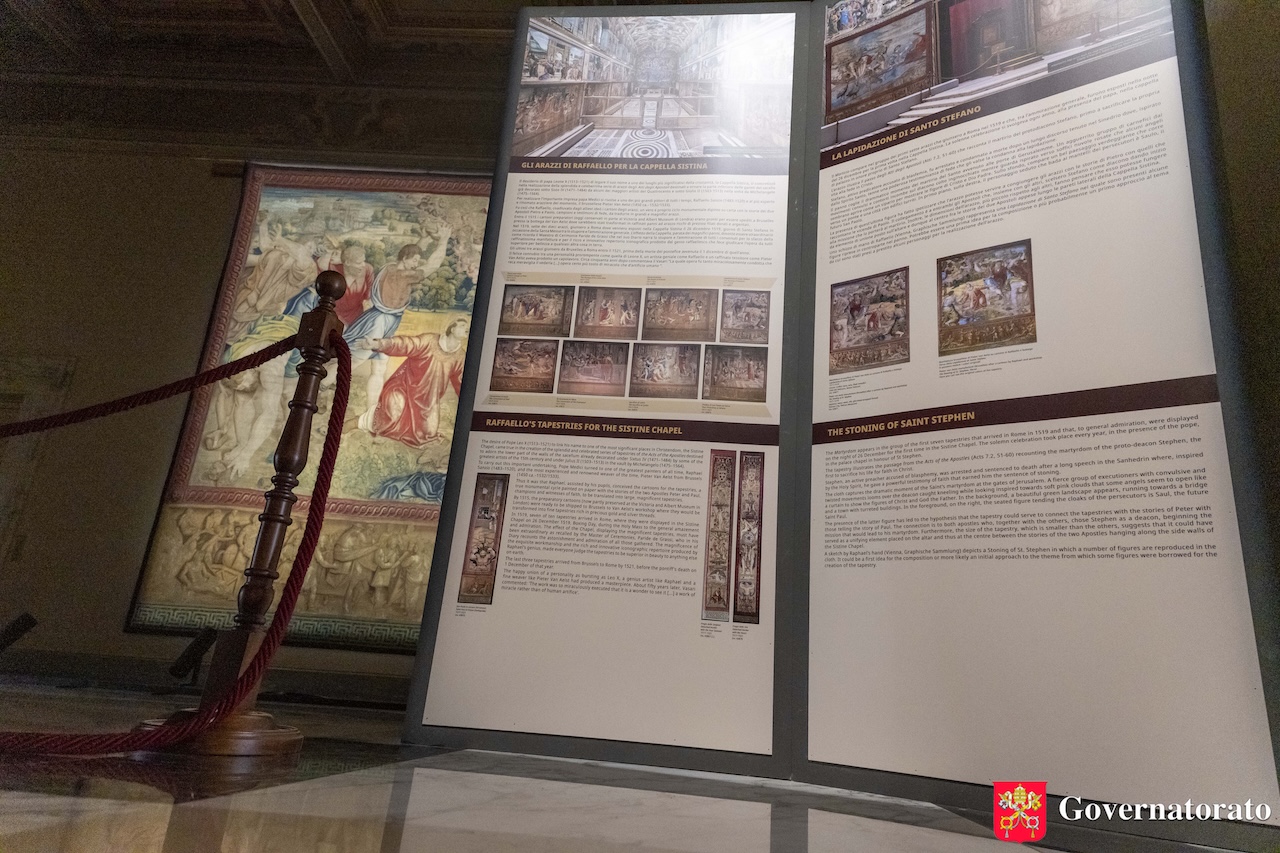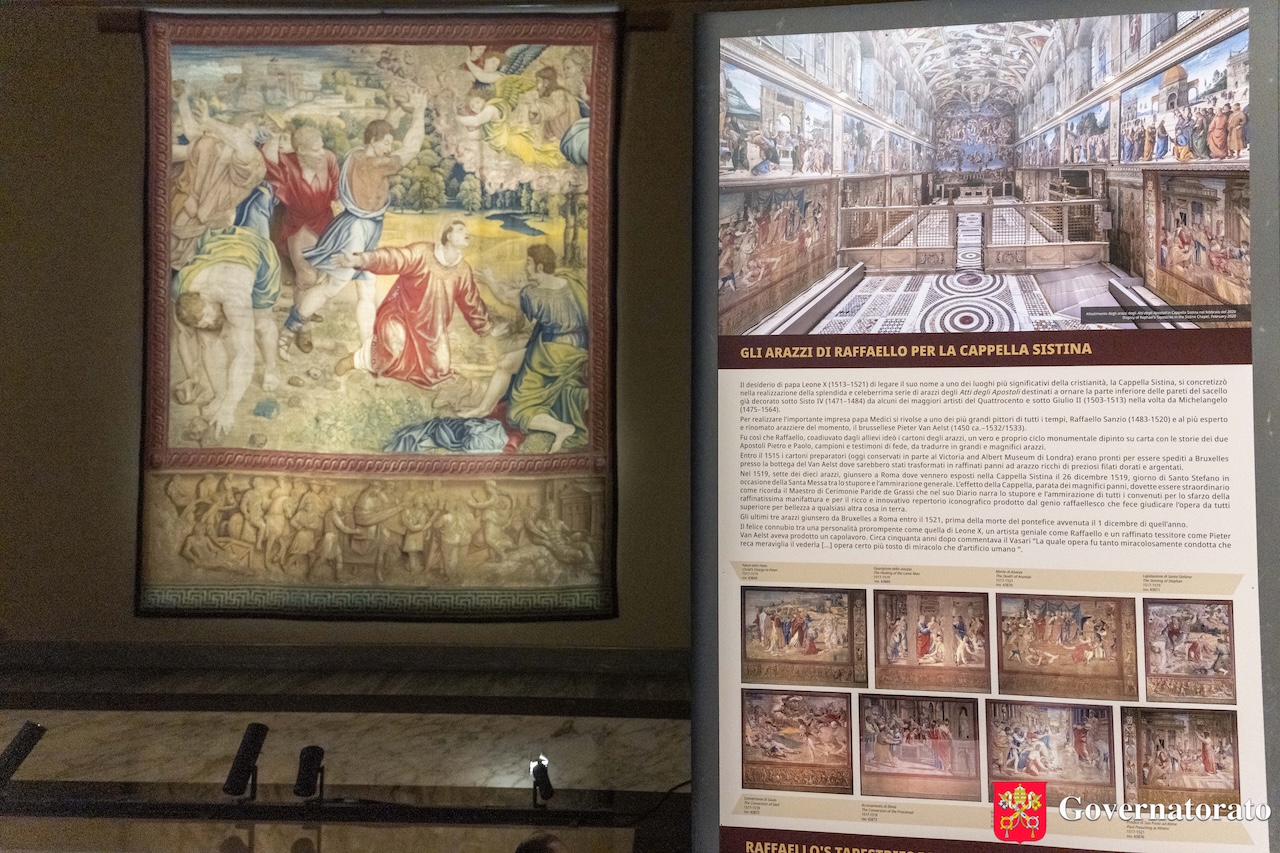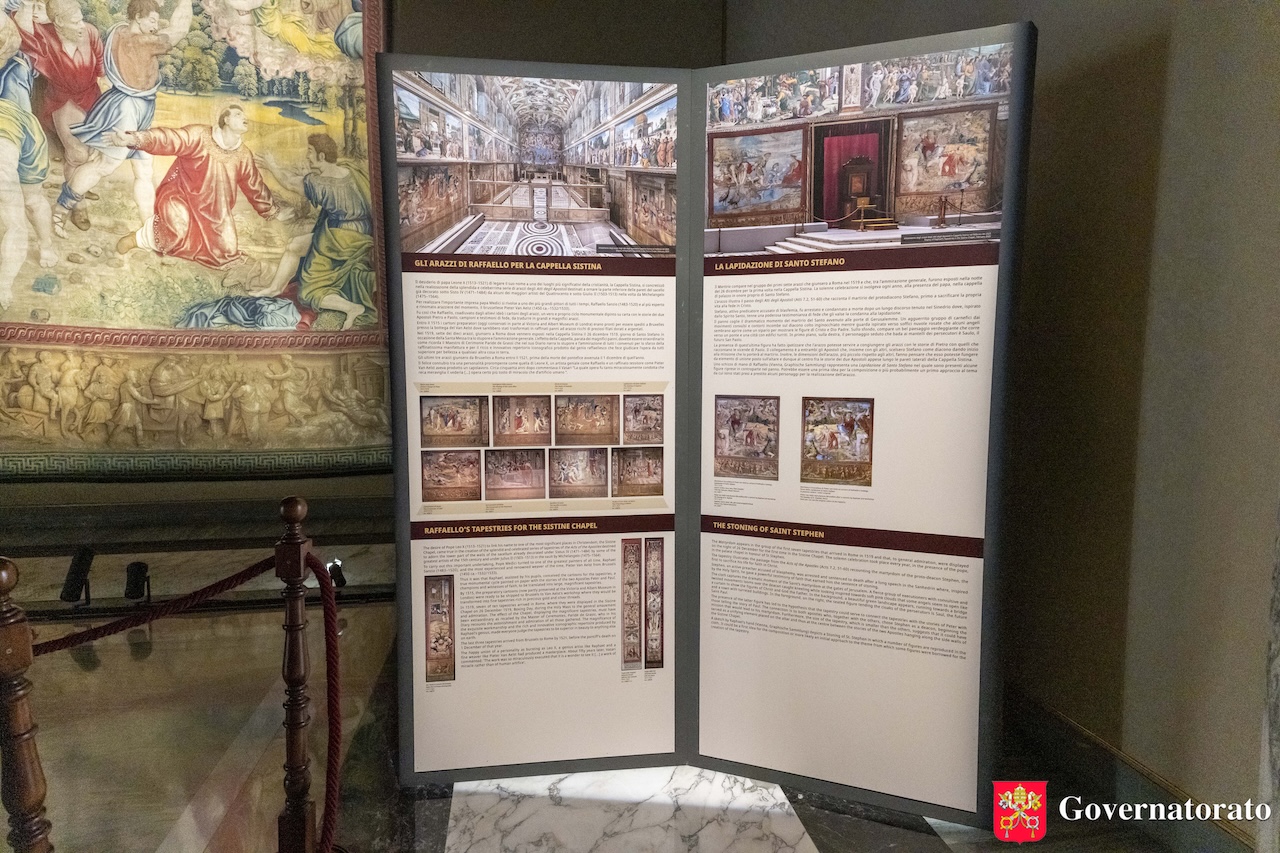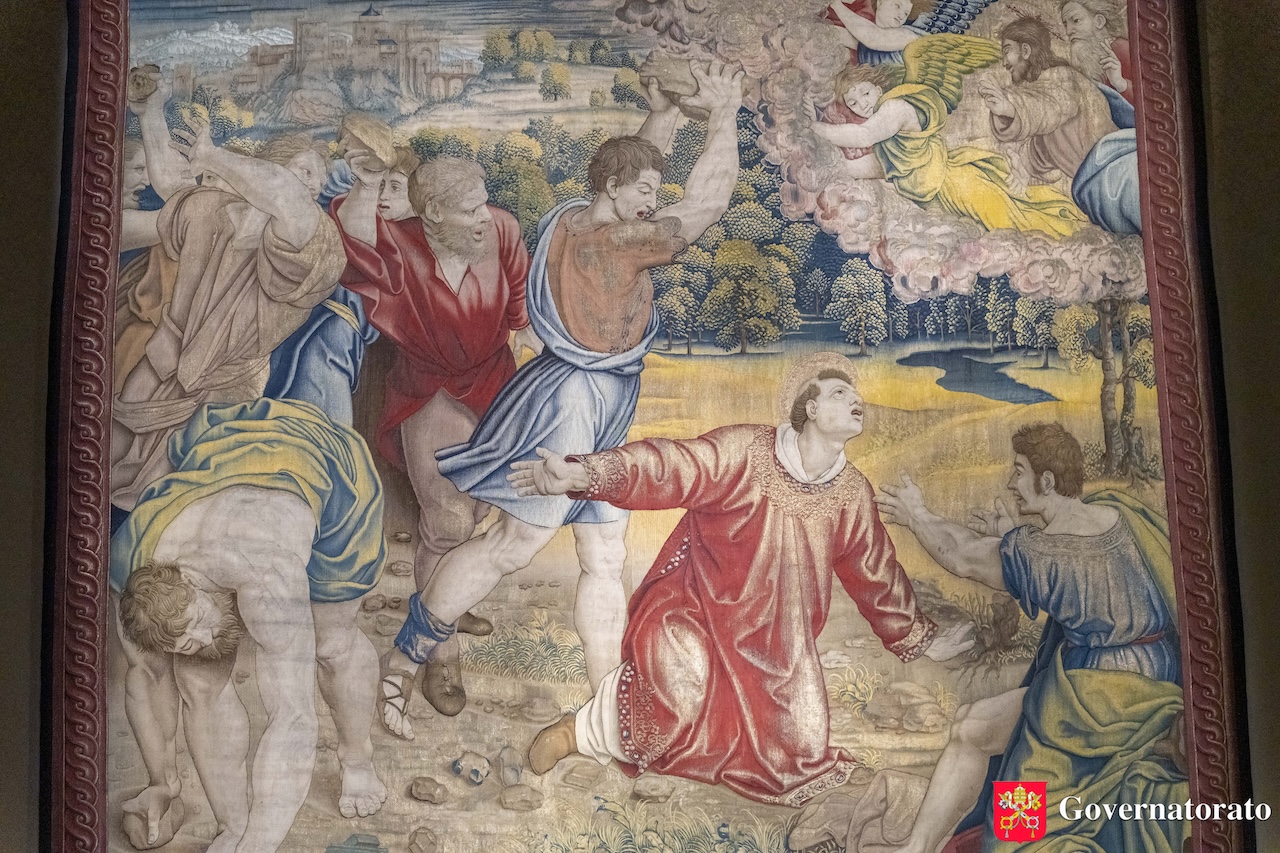The placement of Raphael’s tapestries in the Sistine Chapel
After the important decorative interventions commissioned for the Sistine Chapel by the two Popes of the Della Rovere family – Sixtus IV (1471-1484), commissioned the frescoes on the walls by the greatest artists of the fifteenth century, and Julius II (1503-1513), who entrusted Michelangelo with the famous ceiling – Pope Leo X de’ Medici (1513-1521) also contributed to the magnificence of the Sistine Chapel thus bestowing it with the most important religious significance in Christianity.
In 1515, Pope Leo X – a refined man of culture and a great admirer of the arts – commissioned Raphael Sanzio to create the preparatory cartoons for a series of tapestries illustrating the Acts of the Apostles in order to decorate the lower part of the walls of the Sistine Chapel, which at the time were simply frescoed with faux curtains and papal coats of arms.
The historian Giorgio Vasari recounts that the Pope wanted magnificent tapestries, woven in gold and silk, and that Raphael personally would paint the life-size cartoons, which were then sent to Flanders to be transformed into tapestries.
Between 1515 and 1516, Raphael created a grandiose pictorial cycle on paper, with scenes from the life of Saints Peter and Paul, which his workshop – including artists such as Giulio Romano, Giovan Francesco Penni and Giovanni da Udine – transformed into cartoons for weaving.
In 1517, the canon Antonio de Beatis recounts in his diary that he visited the workshop of the weaver Pieter van Aelst in Brussels where he saw first-hand the tapestries being made. Richly decorated with gold thread, he was particularly struck by the scene of the Delivery of the Keys to Saint Peter, which he judged to be among the most beautiful he had ever seen.
All ten tapestries, along with two decorative friezes representing the Hours and the Seasons, arrived in the Vatican by 1521. The first seven were already exhibited on December 26, 1519 during the Mass for the liturgical feast of St. Stephen, arousing great admiration, as reported in the diary of the Master of Ceremonies Paride de Grassi.
Today, these tapestries are normally exhibited in the Vatican Pinacoteca. However, the lack of precise documentation has made it difficult to reconstruct precisely the original number of tapestries and their original locations.
During the celebrations commemorating the fifth centenary anniversary of the death of Raphael Sanzio, the precious tapestries illustrating the Acts of the Apostles once again adorned the Sistine Chapel, installed on the walls below the frescoes of the Stories of Moses and the Life of Christ, painted in the previous century by the most famous artists of the time at the behest of Pope Sixtus IV.
In the recent past, the tapestries had returned to the Sistine Chapel only twice with two different exhibition criteria. The first exhibition was in 1983 as part of the celebrations for the fifth centenary of Raphael's birth, the second was held in 2010, on the occasion of the exhibition “Raphael. Cartoons and tapestries for the Sistine Chapel”, held at the Victoria and Albert Museum in London, in which Raphael's drawings were compared with the unique final products, the magnificently designed and crafted monumental tapestries.








